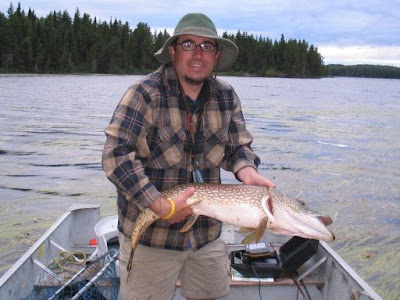
The new Berkley Gulp Alive baits made a big splash with walleye fishermen at our camp last summer. This artificial bait which is said to be organic caught tons of walleyes for much of the season and seemed to work as good as real bait most of the time.
The favorites among our anglers were the 3-inch Gulp Alive leech and the Gulp Alive nightcrawlers.
If you aren't familiar with Gulp Alive it's the bait that comes in jars filled with a liquid that is said to soak into the baits and give them an odor that fish find attractive.
The Gulp Alive seemed to work way better than regular Gulp bait that comes in plastic pouches, not jars.
So while walleye anglers were very impressed with Gulp Alive, we wonder if other Gulp Alive baits would also work for northern pike?
Pike certainly like the soft plastic baits such as twister tails on jigs, Storm shad baits, and Sluggo worms.
I remember watching Bob Izumi on TV one time catching early season northern pike somewhere here in Northern Ontario on salt-impregnated worms in what was called Wacky Worm fishing. In this the angler uses a thick salt-impregnated worm about 5-7 inches long and hooks it once right in the middle with a single hook. The worm, which is quite heavy, is cast out and let sink to the bottom, then periodically given a twitch and a couple of cranks on the reel handle. The pull makes the worm fold and when the pressure is released straightens out again.
The salt-impregnated part of the equation would seem to appeal to a northern pike's sense of smell.
If that is the case, Gulp Alive makes a bunch of saltwater soft baits that I would think would do this even better. Gulp Alive certainly smells. It's also sticky to the touch.
I suggest someone try these baits for northern pike at camp this summer.
You might also try Berkley's Gulp Alive rigged baits, the ones that come on a jig head.
These would be cast and retrieved just like any other lure.
Gulp Alive suggests that after you've used the bait for awhile you put it back in the jar and let it "recharge" with flavor and aroma.
Early and late in the season you could fish them just as you would dead bait (frozen ciscoes).
Best locations would likely be travel corridors, entrances to bays and at the very back of bays.
Click to go back to our website
Click to see the latest on the blog









